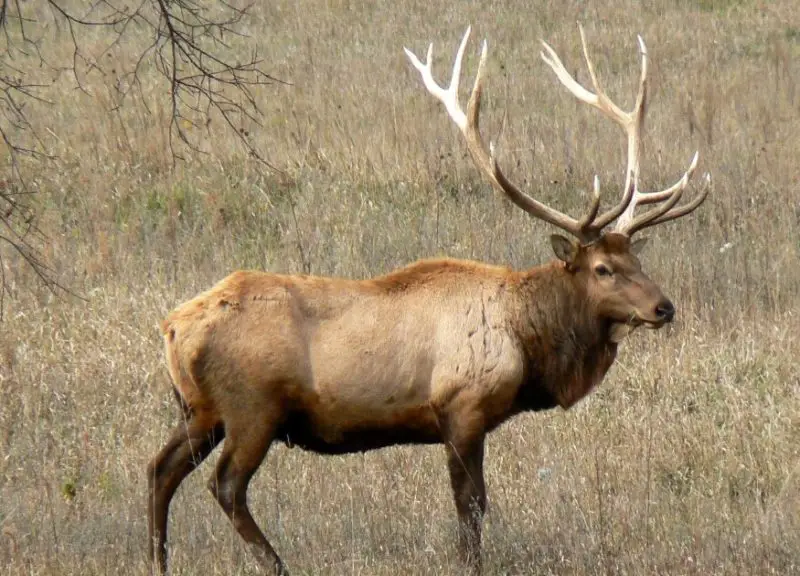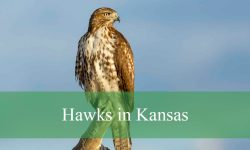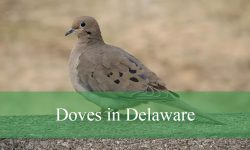Each winter, a remarkable transformation takes place across the rugged landscapes of Wyoming. As temperatures drop and snow blankets the region, thousands of elk descend from higher elevations to congregate in the valleys and basins below. These massive gatherings, sometimes numbering in the thousands, are not just awe-inspiring sights but complex behavioral adaptations rooted in survival, evolution, and ecological balance.
Elk, also known as wapiti, are highly social animals whose movements and behavior shift dramatically with the seasons. In summer, they roam across the mountains, meadows, and forest edges in smaller, more scattered groups. But as winter tightens its grip, elk converge into large herds, particularly in regions like the National Elk Refuge near Jackson Hole. The reasons behind this behavior are multifaceted and interwoven with environmental pressures, biological needs, and human influences.
To truly understand why elk in Wyoming form such large herds during the winter months, one must look at the broader ecological context. From snow cover and food availability to predator avoidance and historical migration patterns, a range of factors influences this seasonal phenomenon. Exploring each of these elements reveals how elk have adapted to one of the most demanding climates in North America.
Environmental Triggers and Seasonal Migration

Winter in Wyoming brings harsh conditions that challenge even the hardiest wildlife. Deep snow, freezing temperatures, and limited food resources make high-elevation habitats nearly uninhabitable for elk. As a response, elk migrate to lower elevations where snow is shallower, and forage is more accessible. This seasonal migration is not random but follows established routes that have been used for generations.
The depth of snow acts as a physical barrier that influences elk movement. Once snow accumulation reaches a certain threshold, elk struggle to walk, forage, or escape predators efficiently. Their instinct is to move to areas where snow is less of a hindrance. In the valleys and open plains of western Wyoming, especially near river corridors and south-facing slopes, elk can find patches of grass, shrubs, and other vegetation despite the cold.
These movements are timed with seasonal changes in temperature and daylight. As the days shorten and food sources dwindle, elk begin their descent. This instinctual migration is a survival strategy embedded in their biological clock. The patterns are so consistent that researchers and wildlife managers can often predict when and where herds will form each winter.
The Role of Food Availability and Foraging Behavior
Winter imposes strict dietary constraints on elk. Unlike in the warmer months, when lush grasses, forbs, and shrubs are readily available, winter forage is sparse, dry, and often buried under snow. Elk are herbivores that rely on large quantities of plant material to sustain their energy levels. During winter, they shift their diet to more fibrous, lower-quality food such as twigs, bark, and dry grasses.
Congregating in large herds allows elk to access known winter feeding grounds more efficiently. These areas, often along floodplains or near geothermal features, offer more favorable foraging conditions. South-facing slopes receive more sunlight and thus have less snow accumulation, allowing elk to graze even in mid-winter. Areas with consistent wind exposure may also have bare ground that supports limited vegetation.
Although grouping together may increase competition for food, it also enables elk to find and exploit these scarce resources more effectively. The collective movement and behavior of the herd help individuals identify the most productive foraging spots, especially in unfamiliar or variable landscapes. These herds are often led by experienced cows who guide others to reliable feeding areas based on memory and previous winters.
Predator Avoidance and Safety in Numbers
One of the most significant benefits of forming large herds in winter is the increased protection against predators. In Wyoming, wolves, mountain lions, and coyotes pose threats to elk, especially calves and weakened adults. During summer, the spread of smaller elk groups across large territories dilutes the risk of predation. However, in winter, the dynamics shift.
When elk gather in large numbers, they create what is known as a “dilution effect.” The chance of any one individual being targeted by a predator decreases in a larger group. Moreover, elk in herds can use collective vigilance to detect danger. More eyes and ears mean predators are spotted earlier, giving the herd more time to react and escape.
The sheer size of a winter herd can also deter predators from attempting an attack. Wolves, for example, may hesitate to approach a massive group of elk, especially when the animals are healthy and alert. Additionally, elk in herds often display coordinated behaviors such as moving in tight formations or placing calves in the center of the group to protect them from predators.
Thermal Regulation and Energy Conservation
Surviving the bitter cold of a Wyoming winter requires effective energy management. Large herds provide thermal and metabolic advantages that are often overlooked. By huddling together, elk reduce the amount of surface area exposed to the wind and cold. This group behavior helps them conserve body heat, especially during blizzards or nighttime temperature drops.
Another advantage of group living is the reduced need for constant movement. In smaller groups, elk must cover more ground to find food, which expends more energy. In large herds, the workload of breaking through snow or searching for forage is distributed across many individuals. Trails established by the herd make travel easier and allow weaker or younger animals to follow with less effort.
This energy-saving strategy becomes critical when food is scarce. Every calorie counts during winter, and conserving energy through group movement and sheltering behavior can mean the difference between life and death. Elk with better fat reserves and reduced energy expenditures are more likely to survive until spring.
Human Influence and Supplemental Feeding
In certain parts of Wyoming, human intervention plays a notable role in elk winter behavior. The National Elk Refuge near Jackson, for instance, provides supplemental feeding during the coldest months. Originally established to prevent mass starvation due to harsh winters and habitat loss, the refuge has become a gathering point for thousands of elk.
This supplemental feeding influences herd formation by concentrating animals in areas where food is consistently provided. Elk learn to return to these locations year after year, reinforcing the pattern of large winter congregations. While the practice ensures the survival of many individuals, it also raises questions about disease transmission and dependence on artificial support.
Outside of managed feeding areas, agricultural fields and ranch lands also attract elk in winter. The presence of hay, alfalfa, or irrigated pastureland can entice elk to move into private property, leading to increased human-wildlife conflict. Despite these challenges, the underlying behavior remains the same: elk gather where survival is most likely.
Historical Migration and Traditional Pathways
The routes taken by Wyoming’s elk are not new. For centuries, elk have followed traditional migratory corridors shaped by geography, vegetation, and seasonal conditions. These ancient pathways are etched into the landscape and into the behavior of the herds that use them. Calves learn the routes from their mothers, and these patterns are passed down through generations.
In some regions, elk migration covers over 100 miles from summer ranges in the high mountains to wintering grounds in valleys and plains. These corridors often align with river systems, ridgelines, and open basins that facilitate movement and provide necessary resources along the way. The annual journey is a vital part of elk ecology and ensures the species’ long-term health and genetic diversity.
Recent studies using GPS collars have revealed the complexity and precision of these migrations. Elk do not wander aimlessly but move with purpose, stopping at specific points along the route to rest and feed. The fidelity to these corridors highlights the importance of protecting migratory habitat from development, fragmentation, and disturbance.
Social Structure and Herd Dynamics
Elk herds in winter are not homogenous. Within a large aggregation, there are distinct social structures, with cows and calves forming one segment and bulls often traveling separately or on the periphery. Cow-calf groups are more stable and cohesive, often led by dominant females with knowledge of safe routes and reliable food sources.
Bulls, having spent the fall in intense competition during the rut, tend to isolate themselves or travel in smaller bachelor groups. Their priority during winter is recovery and energy conservation. The separation of sexes during winter allows cows to focus on calf survival while bulls recuperate from the physical toll of the mating season.
Despite these divisions, elk communicate through a variety of vocalizations, postures, and behaviors. Their social intelligence allows them to navigate herd life effectively, maintaining group cohesion even in large numbers. These behaviors also help reduce conflict and ensure coordinated movement when threats arise.
Impacts of Climate Change and Habitat Fragmentation
The stability of elk wintering behavior in Wyoming is increasingly being challenged by climate change and habitat fragmentation. Warmer winters and altered snowfall patterns are already changing the timing and location of herd formation. Earlier thaws or erratic snow conditions can disrupt the cues elk use to initiate migration.
Habitat fragmentation caused by roads, development, and energy infrastructure poses another significant threat. Migration corridors that have existed for generations are now intersected by fences, highways, and buildings. These barriers not only make migration more difficult but also increase mortality risks from vehicle collisions and limited access to traditional winter grounds.
Conservation organizations, state agencies, and Indigenous communities are working together to identify and protect vital elk migration routes. Wildlife crossings, conservation easements, and land management plans are some of the strategies being employed to preserve the integrity of these essential pathways. The future of Wyoming’s wintering elk may depend on the success of these efforts.
Elk in the Human Imagination and Local Culture
Elk hold a prominent place in the cultural and ecological fabric of Wyoming. For Indigenous communities, elk are not only a source of food but also a spiritual and symbolic animal. Traditional knowledge about elk movement and behavior continues to inform modern conservation and hunting practices.
For local residents and tourists alike, the winter gathering of elk is a powerful reminder of nature’s resilience and spectacle. Wildlife viewing, photography, and education programs centered around these herds provide economic and cultural value to the region. The sight of hundreds or thousands of elk moving across the snow-covered landscape captures the imagination and connects people to the natural rhythms of the West.
In the modern age, balancing human activity with wildlife needs is a delicate task. Understanding why elk gather in large herds during winter is more than a scientific question—it is a doorway into broader conversations about coexistence, stewardship, and respect for the natural world.
Conclusion: A Behavior of Survival and Tradition
The large winter herds of elk in Wyoming are not merely biological curiosities but essential adaptations to the region’s demanding environment. Their migration to lower elevations, concentration in specific areas, and reliance on social structures all reflect centuries of learned behavior shaped by ecological necessity. From predator avoidance and food scarcity to thermal regulation and historical memory, each factor plays a role in the formation of these impressive congregations.
As the climate shifts and human presence grows, the preservation of these natural behaviors becomes increasingly important. By understanding the reasons behind elk migration and winter herd formation, we gain deeper insight into the delicate balance of Wyoming’s wild ecosystems. The story of these herds is one of endurance, intelligence, and the ongoing relationship between land and life.
FAQs About Elk Winter Herds in Wyoming
When do elk typically gather into winter herds in Wyoming?
Elk begin to gather into large herds as early as late October, with most wintering behavior fully established by December. The timing depends on snowfall and temperature changes.
Where can you see large elk herds in Wyoming during winter?
One of the most well-known locations is the National Elk Refuge in Jackson Hole, where thousands of elk winter annually. Other winter ranges exist throughout western Wyoming.
Do elk always return to the same winter grounds?
Yes, elk show high fidelity to traditional wintering areas. These migration patterns are often inherited and repeated year after year with remarkable consistency.






